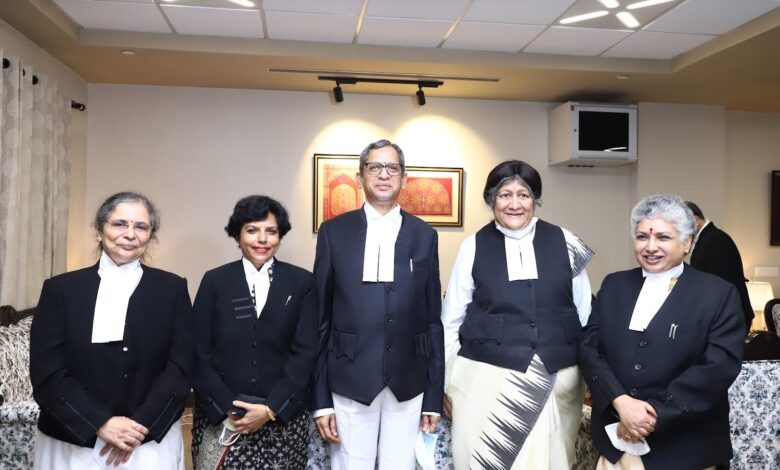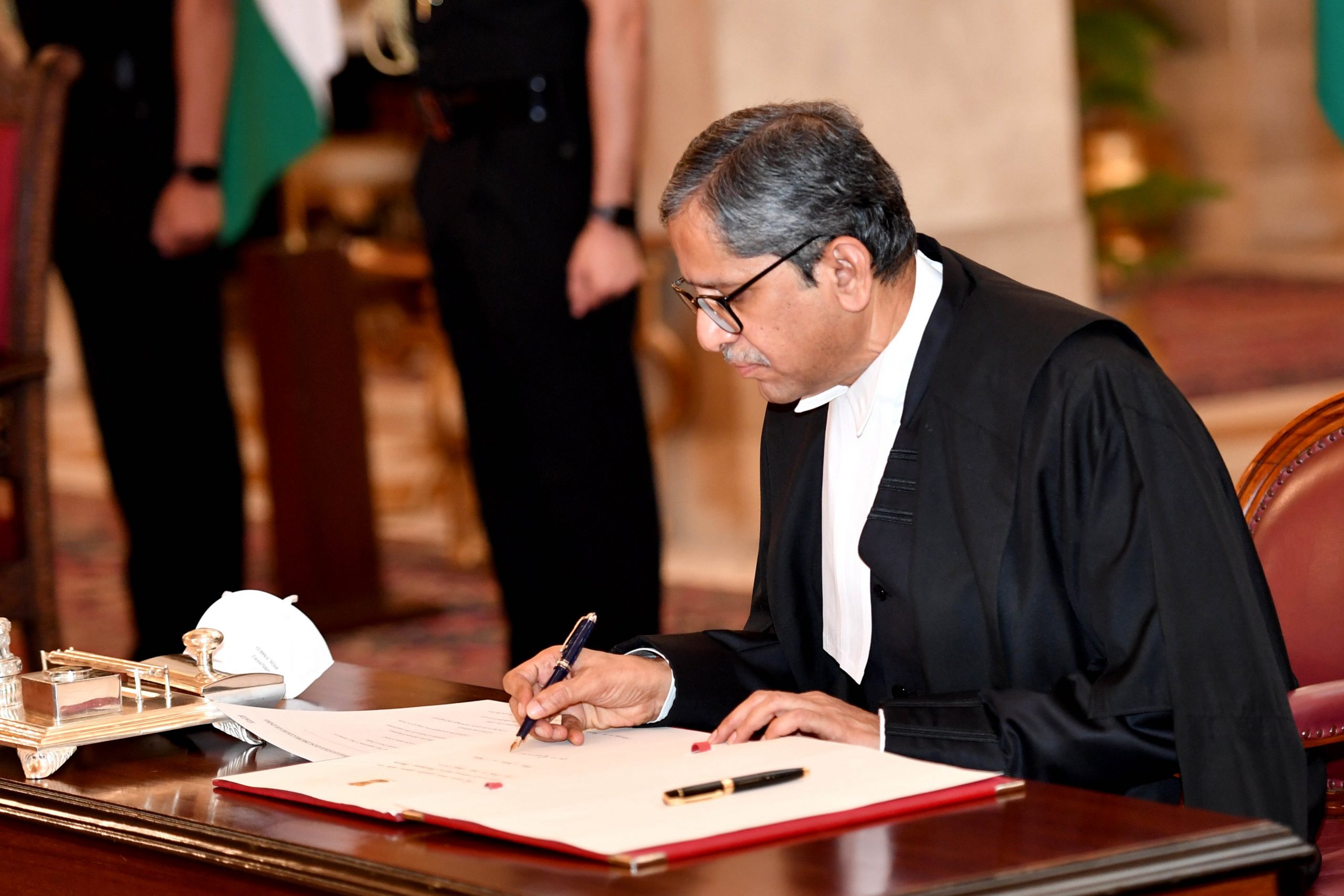CJI bats for 50 per cent women’s reservation in the judiciary – failing economy and desire for it’s revival

CJI has been stressing on reservation for women
India’s economy is in desperate need of revival, not because the pandemic ravaged the economy, but because the condition has been such that it has had some notable cracks for a very long time now, waiting for a trigger to rip them open. Well, looks like the pandemic was that trigger.
India has been a very significant economic base in the world, but over the years, its growth trajectory has been less than what analysts and visionaries were predicting. These cracks have been in place before the pandemic hit, and have only been worsened since. Here are some of those cracks-
India’s devastatingly low tax-to-GDP ratio has continued for a long time now, and every significant tax reform has been a failed attempt for the former’s improvement. It lies in the lowest tax revenue bracket for lower-middle-income countries, and it is without a doubt one of the greatest hindrances in India’s development and equitable growth path.
India started off with a twin-balance sheet problem at the turn of the global financial crisis, and even though there have been reforms and boards set up for problem redressal, the problem has not effectively converted into a four-balance sheet crisis. India’s condition has also been reflected in the fact that the country has proven to be a fairly poor destination for dying companies.

However, another one of the most astonishing parameters hampering India’s effective growth is its falling labour force participation rate. There are a lot of reasons for its prevalence, and even more of its consequences. It is because India is a labour-endowed country, with labour as its abundant resource, and improper utilization of its labour potential is one very significant roadblock in India’s path to growth. This restricts India’s growth as an equitable economy, in its emergence in the International Trade market, and in its productivity realization.
While the pandemic has had a significant dampening effect on the labour force participation rate, it has also highlighted the large gender-based inequalities in the country’s working environment, with the losses in both female jobs and female labour force requirements being much greater than their male counterparts in the two regards.
India’s gendered fault lines aren’t something gifted by the pandemic solely, for the country has had a significantly low and declining female labour force participation for a long time now, and it is every bit as astonishing for this developing country as it may sound.

Therefore, the recent move by the CJI(Cheif Justice Of India), N V Ramana has brought in a lot of attention, and for all the right reasons. The CJI has in the past shared instances of favouring gender diversity in all domains, particularly legal education, and on the similar lines recently batted for 50 per cent reservation of women lawyers in the judiciary.
In his conversation with women lawyers, CJI, N V Ramana expressed how women lawyers should express anger, urgency, and will to demand 50 per cent women’s reservation in the judiciary since the country gender imbalance in the power areas has been a long lived unfortunate legacy.
In a country where women aren’t even supposedly allowed to get angry, let alone shout, such a call from a person in position shows the required dynamic shift we have been longing for from a power place.
This gender imbalance is not just a technicality, and neither is the low female participation and female representation in positions of power, it is a long prevailing aura of suppression that has resulted in this imbalance at the moment.
CJI expressed that women are entitled to this reservation in the light of the continuum of about 1000 years of suppression, and lack of opportunities on the basis of gender. It is a legal right, more than anything else, and women lawyers have been asked to demand it and own it.
When we look at women participating actively in education and higher degrees and getting jobs and making a life for themselves, we tend to overlook the gendered lines that leave behind millions of women who do not have that privilege. 75 per cent of non-working women in India are willing to work if provided an opportunity, provided they are not as burdened by domestic responsibilities.
The fact of the matter is, Indian women are one of the most domestically endowed in the world, for the onus of care falls right on their shoulders, and with it being a full-time responsibility, most women have to restrict themselves from any particular full-time work commitment. Those who do get to participate in the market often face age-old priority discrimination, if not at the primary stages, at the higher positions of authority.

To put things in perspective, look at these numbers. Women constitute only about 30 per cent of the lower judiciary, 11.5 per cent of the High Courts, and 12 per cent of the Supreme Court. Of India’s 1.7 million advocates, only 15 per cent are women, they make up only 2 per cent of the elected representatives in the State Bar Councils, and there are no women members in the Bar Council of India.
These numbers are staggeringly low in themselves, and calls for urgent correction said the CJI. CJI expressed how we realize some things very late, but it is unfortunate that no one would realize it on their own until those who have been wronged raise their voice loud enough. His urge for women lawyers to unite and demand reservation in the judiciary would extend beyond the apex court, and reach other courts as well. This conversation took place in the facilitation ceremony organised by the women Advocates of the Supreme Court of India.
The list of difficulties faced by women applicants in entering the legal profession extend long beyond these numbers, including but not limited to gender stereotypes, gender-based preferential treatment, an uncomfortable working environment within courts, lack of infrastructural resources, and other issues, as mentioned by the CJI N V Ramana.
These infrastructural hindrances, as mentioned by the head of the apex court, dwell on the fact that out of 6,000 trial courts in the country, about 22 per cent have no washrooms for women. “The National Judicial Infrastructure Corporation I have proposed will ensure the inclusive design of Court complexes. We need to create a more welcoming environment,” said Chief Justice N V Ramana.
Inclusivity and gender diversity in law schools has also been advocated for by the Chief Justice, and he has expressed how a reservation in such schools could also be a fair way for the country to go. This advocacy of gender inclusivity in legal education is comprehensive of both the primitive and higher steps in the education path.
These conversations, announcements, and initiatives are an attempt to show the women aspirants that the profession values them and their will, and would help achieve the goal of 50 per cent participation fairly soon if so continues.
“At a time when violent conflict, economic displacement, and a changing climate are causing increasing levels of uncertainty and fear around the world, authoritarian, non-democratic movements are attempting to present themselves as an antidote to these concerns. Instead, the solution must be the rule of law- a powerful, stabilizing, and moderating influence. As judges, we must ensure that we discharge our responsibilities to the highest standards, and in turn earn the trust of the public, whose support is critical to the rule of law.
“The judiciary will not be trusted if it is viewed as a bastion of entrenched elitism, exclusivity, and privilege, oblivious to changes in society and to the needs of the most vulnerable. Indeed, citizens will find it hard to accept the judiciary as the guarantor of law and human rights if judges themselves act in a discriminatory manner. That is why the presence of women is essential to the legitimacy of the judiciary”, said the United Nations Office on Drugs and Crime.
Achieving equality for women judges, in terms of representation at all levels of the judiciary and on policy-making judicial councils, should be our goal- not only because it is right for women, but also because it is right for the achievement of a more just rule of law. Women judges are strengthening the judiciary and helping to gain the public’s trust.
Edited by Sanjana Simlai.




